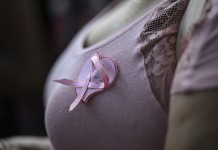
Lamu, KENYA: The Kenya Wildlife Service-KWS in Lamu county has began a massive water tracking exercise to rescue thousands of wild animals facing drought in the county.
The KWS has at the same time commenced rescue operations for hundreds of hippos stuck in mud at the Lake Kenyatta,Lake Chomo,Mkunumbi dam and other former water sources that have now dried up and turned muddy due to the drought.
According to records at KWS,its estimated that over 50 hippos have died after they got stuck in the mud.
At least 100 more hippos are still stuck at the various water points with the KWS saying they were working hard to ensure the remaining ones survive.
At least 60 hippos are stuck at the muddy puddles of what now remains of Lake Kenyatta in Mpeketoni while 50 more have been confirmed stuck at the Mkunumbi dam.
The situation at the Lake Chomo in Hindi is even dire with at least 20 hippos and their young ones having been confirmed to have also stuck in the mud with an unknown number having already perished.
Speaking in his office in Lamu on Wednesday,county KWS senior warden Jacob Orale said they had began an exercise to drag out wildlife stuck in mud across the county in order to reduce further resultant deaths.
He said the KWS was also carrying out intense water tracking which simply means spraying water in the various areas where the hippos are stuck in order to keep them hydrated and also loosen the consistency of the mud in order to enable the animals to walk free.
Orale said the KWS was also filling up various water points used by wildlife in Lamu in order save the animals from perishing due to the drought.

He said due to the drought situation,many of the wildlife had fled their habitats and moved closer to human residences in search of food and water.
“We have to save at least some of these animals because at the end of the day,if their numbers dwindle,its also risky to the balance of the ecosystem and will definitely not do our tourism industry any good. We are spraying water at the hippos stuck in the mud so that they aren’t dehydrated to death considering the nature of the skins and also to make the mud loose so that they can try walking out.we are also putting up water pans all over the wild for the wildlife to drink,”said Orale.
The KWS commander said the water tracking exercise will also reduce or cut short trips made by wildlife to human habitats in search of water.
KWS had earlier on expressed fears of massive wildlife deaths since the animals have now been forced to resort to drinking highly concentrated saline ocean water which isn’t good for their health after all fresh water points dried up due to the drought.
“We believe the water tracking exercise will reduce encounters between humans and wildlife to some extent and will also reduce resultant deaths and injuries.but majorly we are doing this to keep the wildlife alive hopefully until the drought passes,” said Orale.












